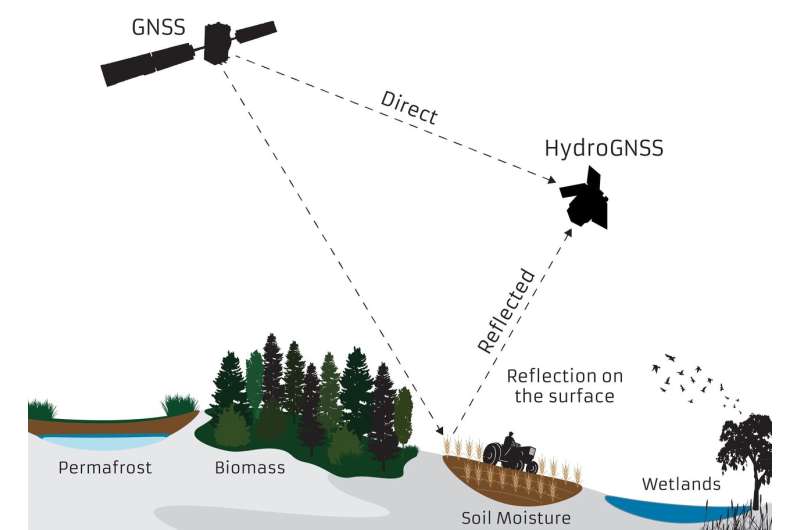Following the selection of the first Scout satellite mission last December, ESA has also given the greenlight to start negotiations with Surrey Satellite Technology Ltd in the UK to lead the development of the second Scout mission—HydroGNSS.
Complementing ESA's series of Earth Explorer research missions, Scout missions are a new element in ESA's Earth Observation FutureEO Programme. The idea is to demonstrate the capability of small satellites to deliver value-added science, either by the miniaturization of existing technologies or by demonstrating new sensing techniques. Adopting an agile development process, the aim is to implement a Scout mission, from kick-off to launch, within three years, and for a maximum of €30 million. This budget includes the development of the space and ground segments, launch and in-orbit commissioning.
The first Scout mission, ESP-MACCS, focuses on understanding and quantifying processes in the upper atmosphere over the Tropics—these processes play an important role in the overall evolution of the atmosphere. This second Scout mission, HydroGNSS, will provide measurements of key hydrological climate variables, including soil moisture, freeze–thaw state over permafrost, inundation and wetlands, and above-ground biomass, using a technique called Global Navigation Satellite System (GNSS) reflectometry. In doing so it will complement missions such as ESA's SMOS and Biomass, Copernicus Sentinel-1 and NASA's SMAP.
The satellite measures the signal reflected off the land, ice and ocean from existing GNSS missions such as Galileo and GPS. Although these signals are faint, they can be collected by a low power receiver that can be accommodated on a small satellite in low Earth orbit making it compatible with a Scout mission.
The industrial consortium consists of Surrey Satellite Technology Ltd (UK) in charge of the development of the complete system, and a consortium of scientific institutes that will develop the retrieval techniques to access these key hydrological climate variable from the reflected signal: the National Oceanography Centre (UK), the Nottingham Geospatial Institute (UK), the University of Rome La Sapienza (IT), the Institute of Space Studies Catalonia (ES), and the Finnish Meteorological Institute (FI).
ESA's Acting Director of Earth Observation Programmes, Toni Tolker-Nielsen, said, "The decision to implement HydroGNSS after ESP-MACCS demonstrates that the Earth observation community is very interested in the concept of Scout missions. We are confident that this interest will further flourish when we see the first data in 2024."
Explore further



